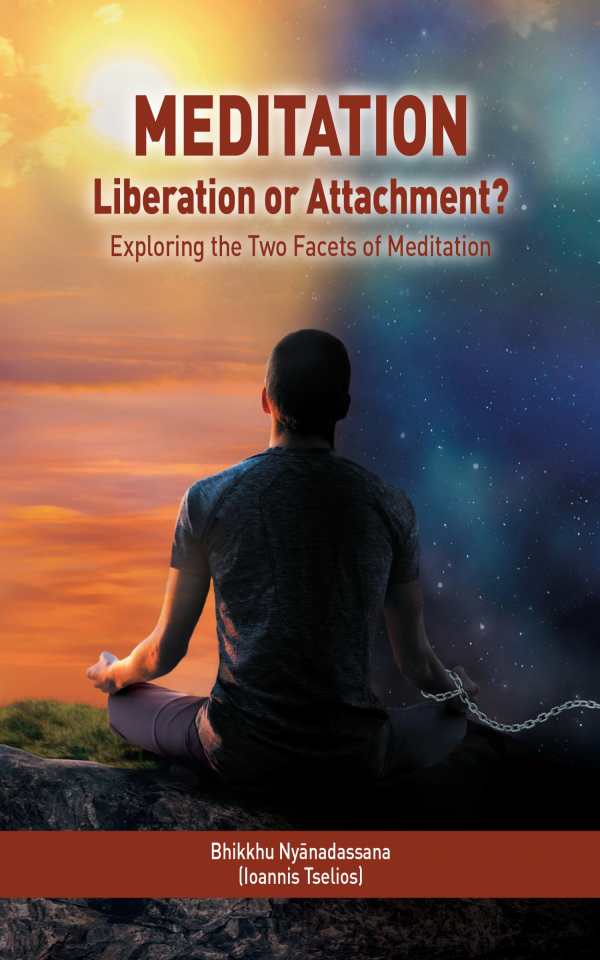
Meditation: Liberation or Attachment?
Exploring the Two Facets of Meditation
Meditation: Liberation or Attachment? is a thorough spiritual guide for gaining experiential insight into the nature of the world and one’s limiting mental patterns and perspectives.
Bhikkhu Nyānadassana’s comprehensive guide to Buddhist meditation is about not forming attachments within one’s practice and attaining liberation, well-being, and lasting contentment.
Informed by years of study, practice, and teaching, the book describes various meditative practices in detail. It pays particular attention to the pitfalls of forming attachments to feelings of bliss or well-being that arise during meditation. It also asserts that—while meditation can have enormous benefits for practitioners, including reduced stress, enhanced attention, mental clarity, and tranquility—becoming too reliant on these positive results can distract one from developing further insight and attaining ultimate liberation from suffering. The goal of mediation, the book argues, is not to escape from reality and experience bliss, but to gain experiential insight into the nature of the world and one’s limiting mental patterns and perspectives.
Split into five sections, this detailed handbook provides instruction for several major types of Buddhist meditation. This work is preceded by a brief history of Buddhism and the practice of meditation, including an introduction to foundational concepts including mindfulness, attachment, and meditative absorptions. This is followed by coverage of serenity meditation and insight meditation and the subtypes of each, including mindfulness of breathing, meditation on friendliness, and meditation on compassion.
The book’s instructions are clear and thorough. In covering insight meditation, for example, it includes an in-depth exploration of the foundational practice of experiencing the rise and fall of all phenomena that leads to the experience of enlightenment. The concept of attachment is focused on throughout, too, as with guidance on freeing oneself from unhealthy relationships via positive sensations that occur during meditation. This work is capped with a consideration of nirvana that includes answers to common questions, followed by a translation of the mahā satipaṭṭhāna sutta, the Buddha’s discourse on the establishment of mindfulness through meditation.
The prose is clear and direct, with detailed descriptions of meditative states and comprehensive explanations of common points of confusion. However, issues of repetition and excessive detail undermine its progression somewhat. Still, the book’s exhaustive dedication to explaining the minutiae of meditative practice and Buddhist philosophy makes it a strong resource, as do its complementary illustrations of meditative states and postures.
Dissecting how attachment functions within meditative practice, Meditation: Liberation or Attachment? is an insightful spiritual guidebook covering various types of meditation.
Reviewed by
Bella Moses
Disclosure: This article is not an endorsement, but a review. The publisher of this book provided free copies of the book and paid a small fee to have their book reviewed by a professional reviewer. Foreword Reviews and Clarion Reviews make no guarantee that the publisher will receive a positive review. Foreword Magazine, Inc. is disclosing this in accordance with the Federal Trade Commission’s 16 CFR, Part 255.
